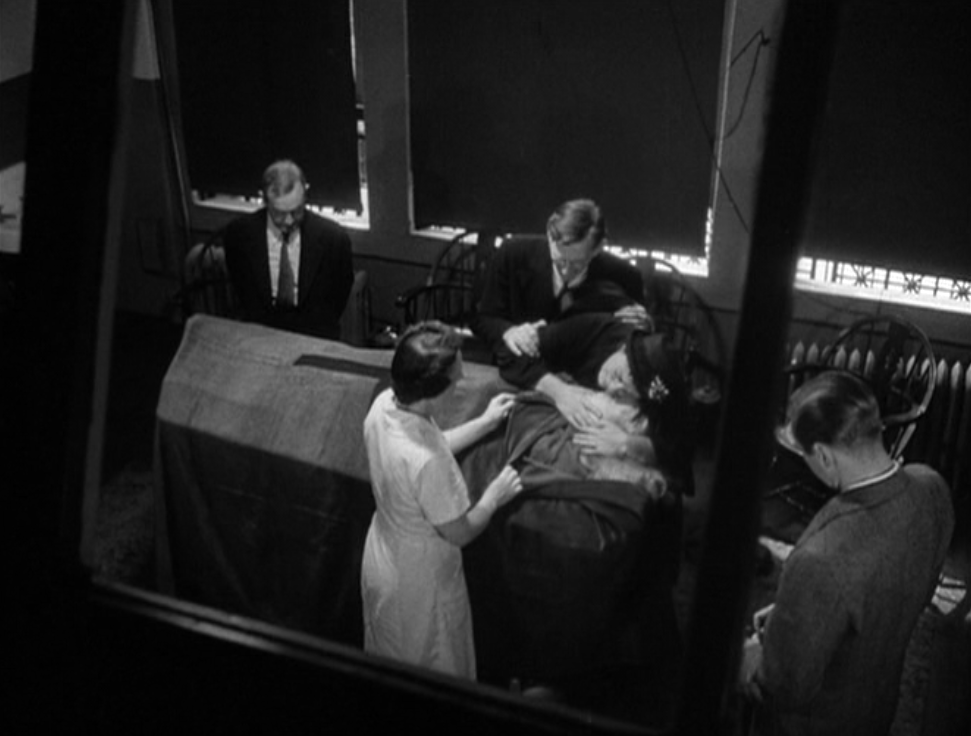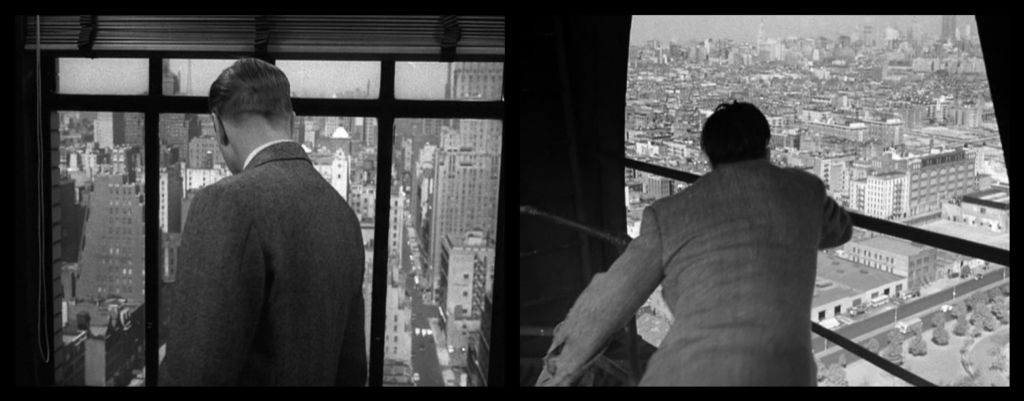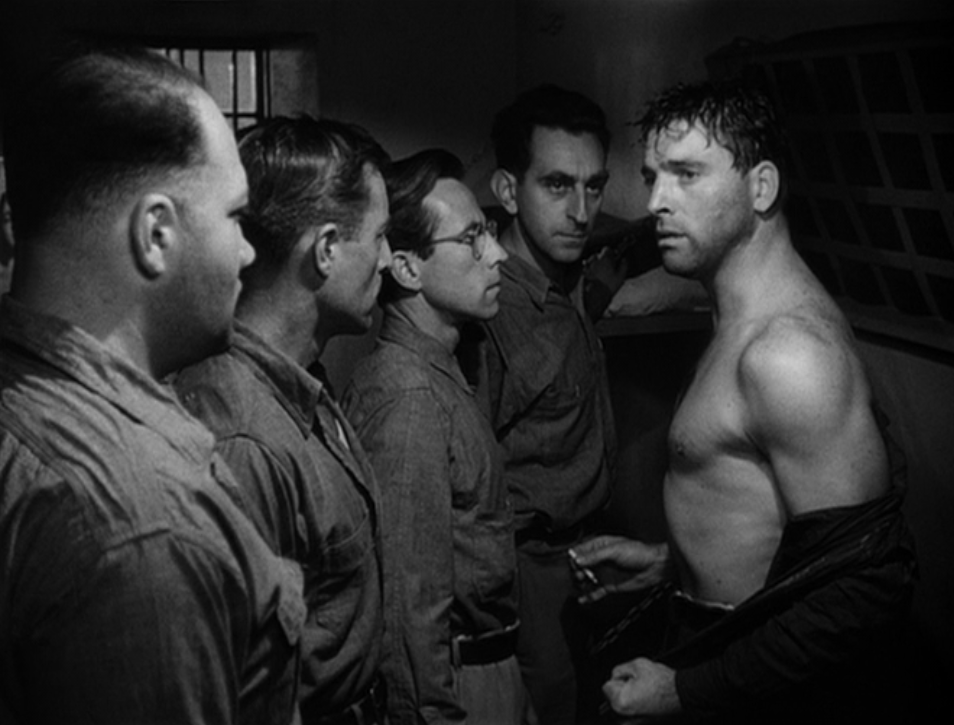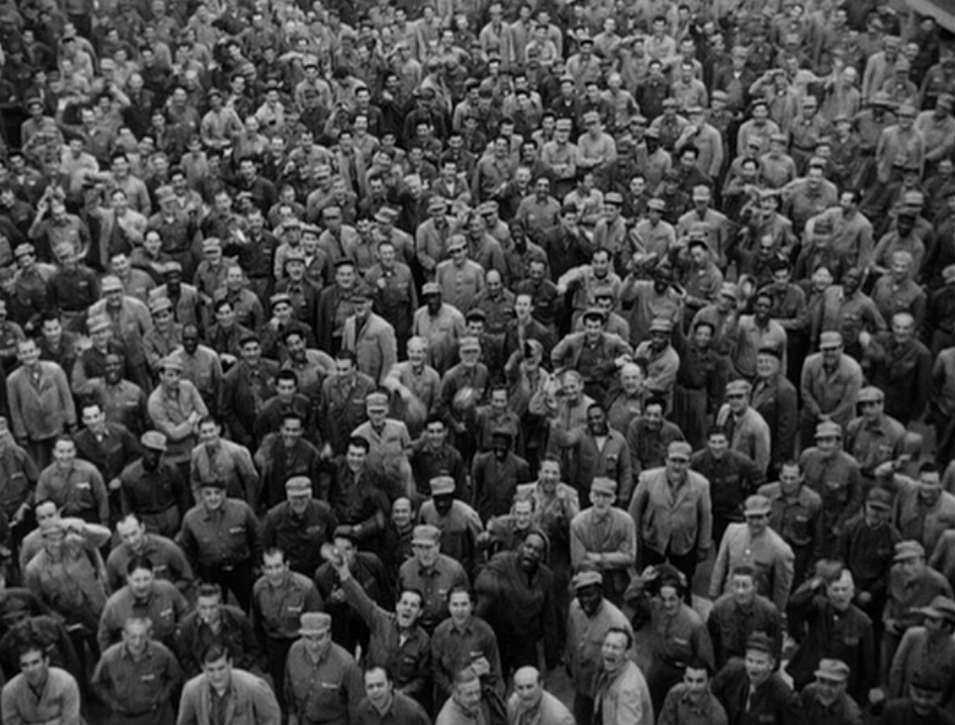
|Geoffrey Stueven| The Naked City was directed by Jules Dassin, as stated, but its lead creative force is journalist-turned-movie producer Mark Hellinger. His affinity for Weegee’s extraordinary 1945 photo book Naked City animates what could have been a fairly tepid noir. The book Naked City was a freewheeling and feverish glimpse under the veneer of mid-century city life. The Naked City adds a definite article, for a somewhat less definitive translation of the book’s themes. Hellinger is there at the outset, in lieu of opening credits, telling the audience who made the picture, who the stars are, and why we’ve been so suddenly dropped into a helicopter view of New York City: to see the rhythm of life as it’s truly lived, and slowly descend on one of millions of possible stories.
The movie is never more haunting than in the bleak and beautiful views of this opening sequence, which makes an essay of establishing shots and weaves in parts of a story we don’t realize has already started. It also offers a few visions of shocking death that seem indifferent to the Production Code, and most closely channel Weegee’s work (he was involved in creating some of the film’s static shots.)

The Naked City then proceeds as the story of a dead woman who never gets to speak, a device that proves alternately eloquent and frustrating. What might seem like the film’s biggest mistake, the completely phony reactions of friends and lovers to news of the woman’s death, is from a different angle its eeriest evocation of her life’s loneliness and disconnection. Later, the pair of detectives investigating her murder encounter the woman’s parents. When the mother’s angry litany of “I hate her” gives way to inarticulate grief upon seeing the body, the characters’ habits of indifference and victim-blaming are finally given a counterpoint. The film comes closer to the reality of death and the uncharitable reaction of the living than most noirs.


Elsewhere, its points of interest are as varied as the “city of stories” framing suggests. In one astonishing scene, young detective Halloran briefly returns home to nuclear family splendor outside the city, where Mrs. Halloran repeatedly implores him to whip their child for leaving the yard. “Why me?” he asks, in high cheer. End scene. Is there any way to take this, except as the most archly ironic parody of American domesticity ever conceived, whether in film or sketch comedy? Amazing that this scene precedes television, and the laugh track. But in other ways, The Naked City seems quite simple and timid. For a film that considers the full range of human life to be within range of its lens, it is weirdly taken with the idea that playing the harmonica is the greatest possible eccentricity.
The film’s shifting perspective, roving omniscience and grab-bag of ideas likely owes as much to the sometimes awkward fit of Hellinger’s and Dassin’s perspectives as it does to the source material. There seems to be a consensus view that the chase sequence that ends the film, up high above the Williamsburg Bridge, is Dassin showing his hand as a stylist, somewhat at odds with the photorealist ambitions of Hellinger. Funnily, it’s the moment the film finally becomes exciting in a sustained, visceral way.

In the superior Brute Force, a pulpy prison break drama rooted in the inhumanity of the carceral state, the material stands on its own. It’s a better Dassin showcase, too, more noticeably the work of a distinct creative force. Enter Westgate, a perpetually rained-on prison with a population at twice capacity, no opportunities for rehabilitation, and an administration intent on exerting control over the inmates, winding up the “human bomb.” A few of the employees inside are would-be foils to this state of things, but the power-hungry lead guard considers kindness a weakness and enforces his own policies.
As the guard, Hume Cronyn embodies some of the more distressing examples of coded homosexual villainy in classic Hollywood (seeking favors, er, “information,” from an inmate, then dooming him when not reciprocated? check; framed photo of muscled marble bust in well-appointed office? check!), but it’s certainly a terrific and surprising performance. I never imagined Cronyn as a quietly menacing sadist, either.

The film also marks Burt Lancaster’s second screen credit, after The Killers, and it’s odd to see such an obvious leading man still anchoring an ensemble, disappearing for long stretches. Still, the unflinching determination with which he bites into a sandwich (after reading the paper message concealed inside) reveals him as the film’s true star, if any doubt lingers.
The prison break climax leads to an ending so bleak that it plays like a subversion of the Production Code, even as it follows its prescripts. There’s no sense of punishment being meted out by moral authority, just one of tragic miscommunication, hopelessness, and the teeming humanity behind prison walls.

Brute Force and The Naked City play as a double feature all weekend long at the Trylon, buy your tickets here. If you’re interested in checking out Weegee’s photo book, it’s largely out of print except for a reprint available on Amazon. However, it is in circulation in the Hennepin County library system.
